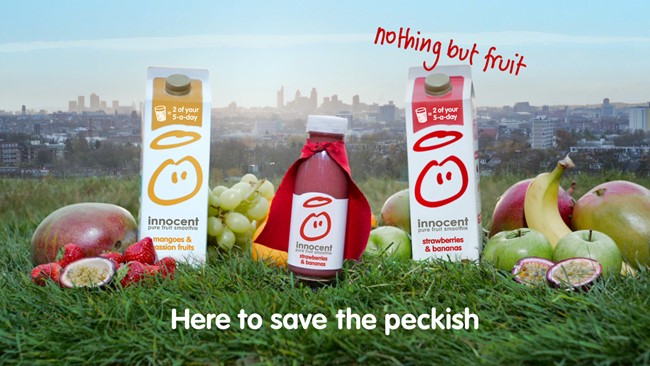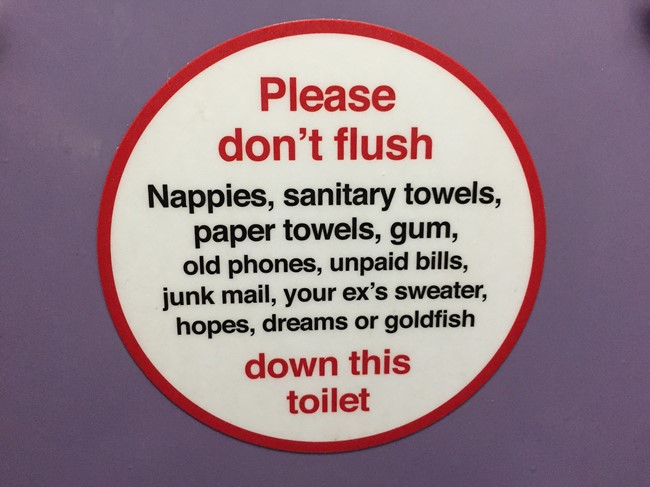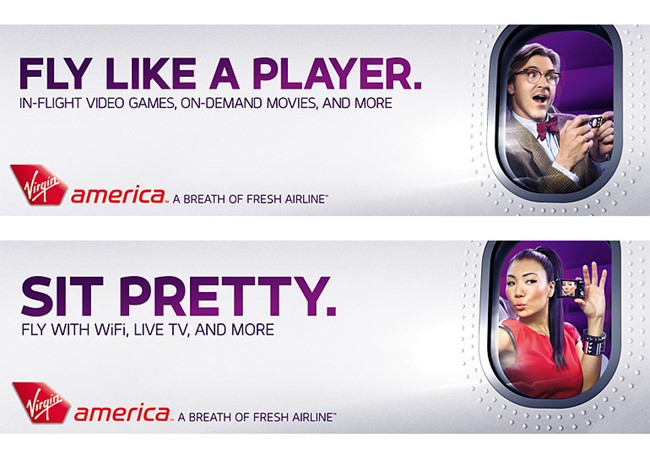Opinion: How can brands take their tone of voice around the world?

Neil Martin from language agency the First Word explains the pitfalls and practical steps to making words work in different countries
In our writing workshops, we often ask people to shout out brands that have a distinctive tone of voice. In the UK, two names always come up: Innocent and Virgin. As different as they are in some ways, both brands use British idioms and humour to add personality to their writing.
If Innocent smoothies are made from ‘nothing but fruit,’ their brand is built on nothing but cutesy copy.

Innocent’s tone of voice is rooted in British English. The word ‘peckish’ is what makes the writing quirky (or sickly, depending on your point of view). Either way, the brand has chosen to use a very British word here.
Similarly, Virgin turns functional messages into fun, irreverent copy. Even a toilet sign gets the tone of voice treatment. Virgin Trains’ sign raises a smile in the UK. But would it work overseas?

If Virgin put this sign on a train in the USA, it would travel better than Innocent’s copy (pun intended). But we’d bet that it wouldn't work as well as it does in the UK. It’s not just a matter of swapping ’nappies’ for ‘diapers.’ It's the sense of humour.
How do you retain what’s distinctive about your brand’s tone of voice in other countries?
Understandably, brand teams want to control their verbal and visual identity, especially in new markets. So they often translate content word-for-word in an attempt to maintain consistency.
Resist the temptation to stick closely to the original wording. It only guarantees your place in an article called '15 Times Translators Got It Hilariously Wrong' (alongside a Coors tagline which translated ‘Turn it loose’ as 'Suffer from diarrhoea' in Spanish).
The best way to maintain the essence of your brand messaging is to commission expert local copywriters. They’ll interpret your tone of voice – not just translate the literal meaning – and produce content that’s right for the brand and the audience.
Virgin, when writing in the US, sees the principles of the brand’s tone of voice – clever, friendly and provocative – stay the same. But British idioms are replaced with American ones.

This ad could have been written in Mandarin or Brazilian Portuguese. What gives the writing its distinctive personality is not the language. It’s the tone, style and humour.
Using savvy copywriters for ads is one thing. But what about the teams that write hundreds of messages to your customers every day, like contact centres?
If your teams are writing in English, the first step is to create a version of your tone of voice guide tailored to that country. This should include helpful phrases that fit your tone of voice, along with templates they can adapt easily.
It’s better to sacrifice a bit of character for the sake of clarity here. Your international tone of voice guidelines may be a bit ‘vanilla’ in comparison, but there’s less risk of confusing or even offending your customers. You’ll also be able to address the features of language that can cause problems for non-native English speakers, like contractions and phrasal verbs. It’s not a grammar lesson. It's a practical way to help your teams tune in to your tone of voice and write naturally.
For example, the Philippines has some of the most qualified English speakers in the world. Yet even the best educated struggle to use the same tone as their UK colleagues. The problem is not their ability. In our experience, it's often that they’re working with templates that are full of idioms and complex sentence constructions. Native speakers find these difficult, never mind non-native speakers who can’t deviate from the standard text. By simplifying the templates and providing the right training, these teams are able to write in a clear and natural style.
The cultural context is important too. A great way to make sure your brand messages land in the way you intended is to identify tone of voice ambassadors. They’ll not only help adapt your tone of voice to local audiences, they’ll feel empowered by the chance to maintain your brand voice in their country.
This is the approach we’re taking to help the World Wide Fund for Nature (WWF) develop its tone of voice internationally. Rather than simply ‘rolling out’ the tone of voice in the UK, we’re involving international teams from the start. This helps us to understand what practical support they need. It also gives us insights into how to adapt the WWF’s tone of voice and messaging for different countries.
Translating the subtleties of tone from one language or country to another is notoriously difficult. But done with sensitivity and the right support, brands can avoid linguistic gaffes, inspire their teams with words and maintain a distinctive voice, wherever they are in the world.












